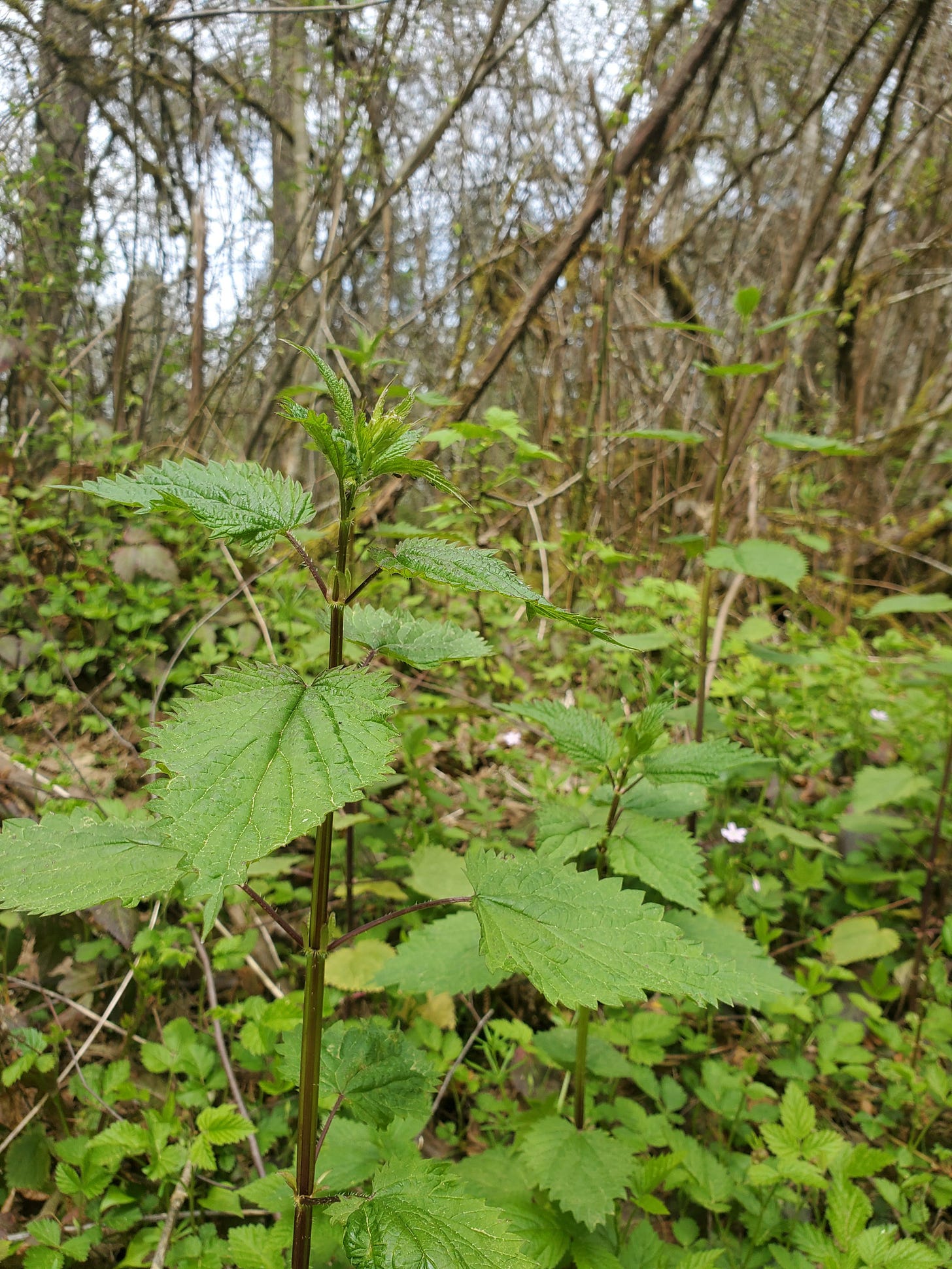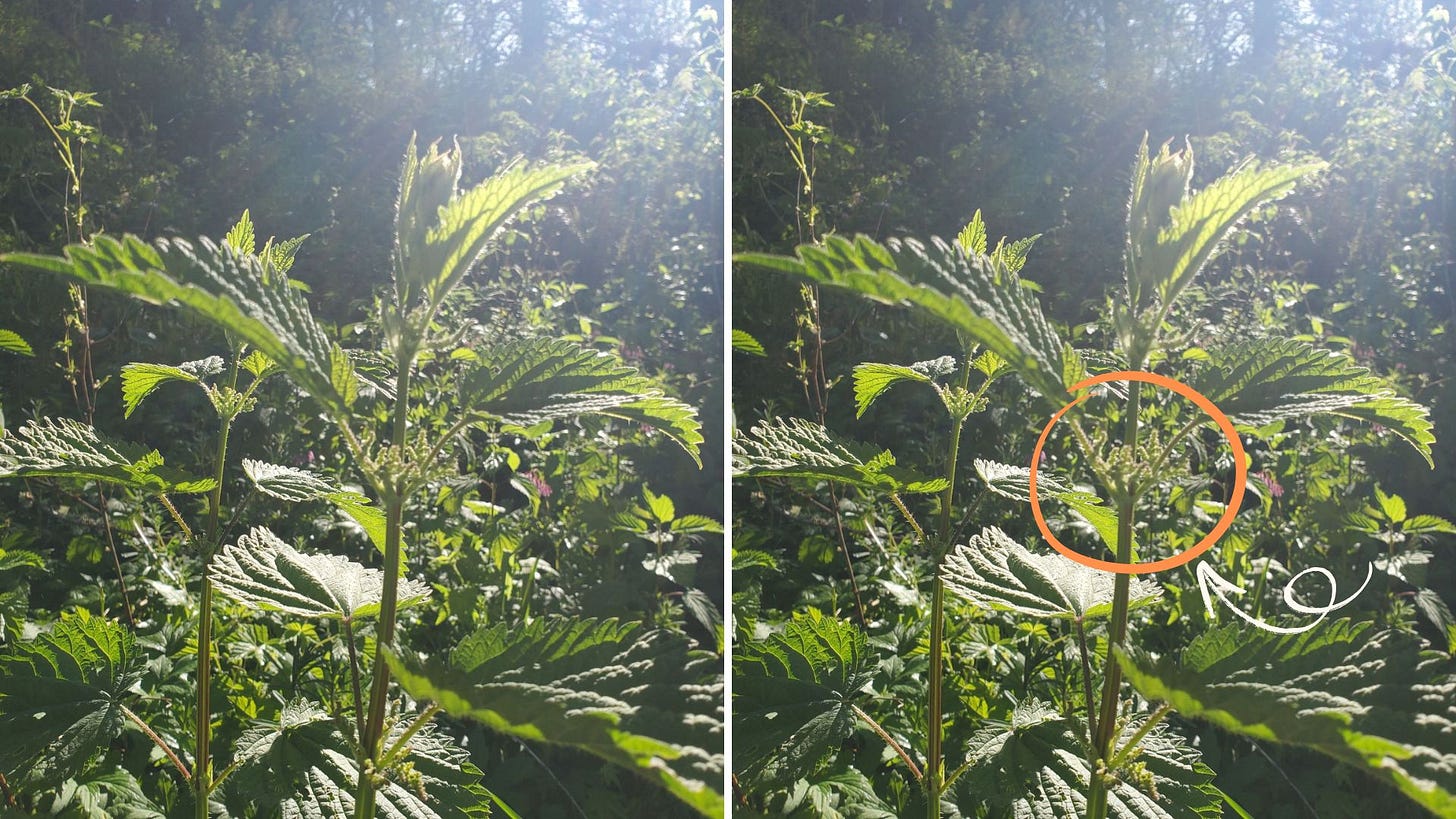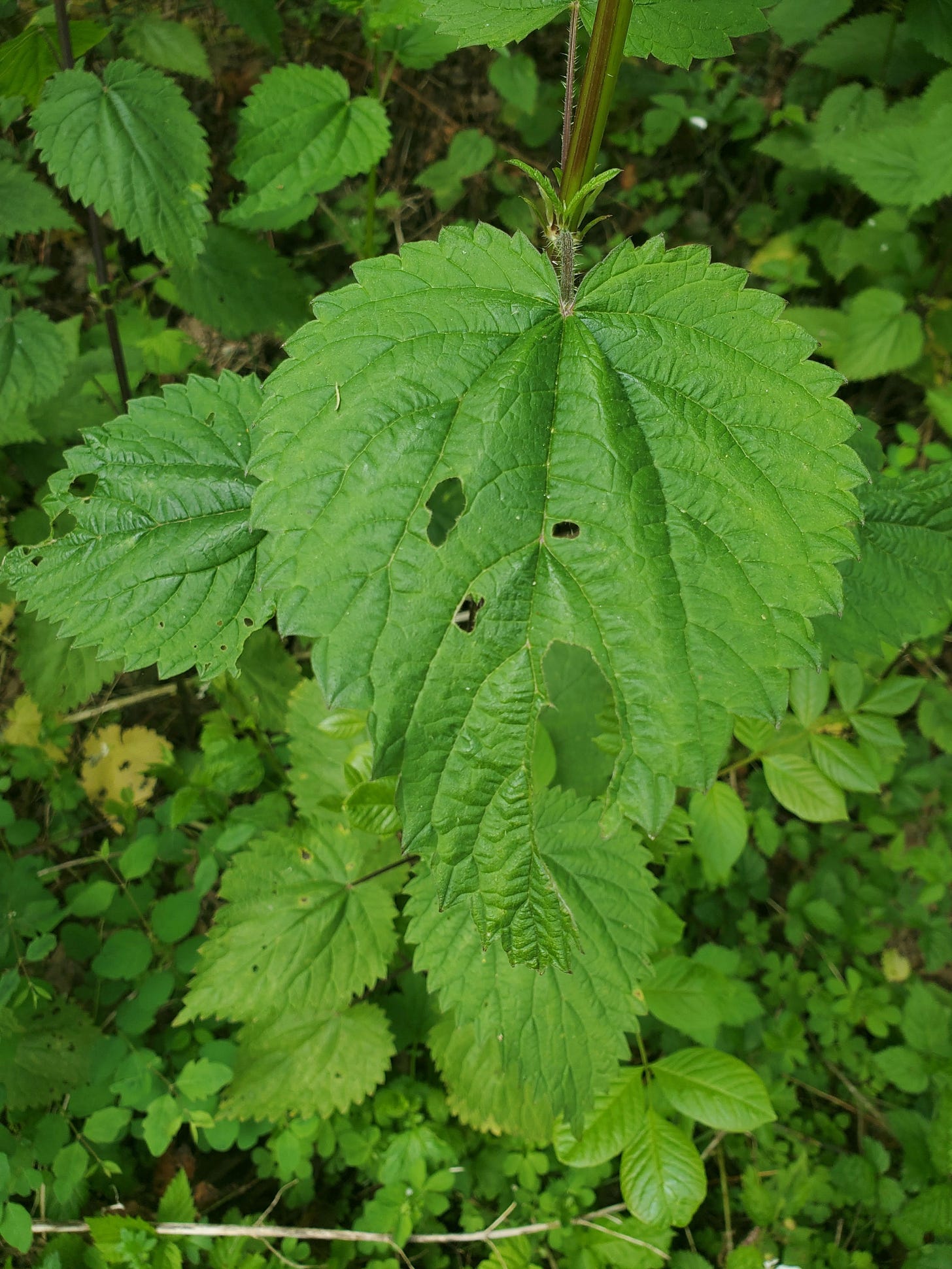Nettles: Patterns, Surprises, and Small Discoveries
Exploring the magic of plant details, family patterns, and shifts in spring growth
Each month, I join a group of herbalists and plant lovers in the Plant Wonder Collective to explore a different plant. It’s been a true joy to spend more time with some familiar plant friends and also meet a few new ones, gathering little discoveries along the way. I love bringing these explorations here, too — to share a deeper look at what I'm noticing and learning through the seasons.
This month, we’re spending time with nettle — a plant of nourishment, of energy rising back up through the soil, and of reminders to pay attention to the small details. It’s been great to follow nettle through the month, watching it shift as the season does, and we near mid-spring.
Is Nettle in the Mint Family? Nope! Here’s Why.
At first glance, nettle (Urtica dioica) might seem like it belongs in the Mint Family. It has opposite leaves, a somewhat square stem, and spreads easily across an area—just like many mints do! So why isn’t it grouped with them?
Plant ID is a blend of recognizing patterns while also observing the finer details. And when it comes to classifying plants, flowers are often the key!
Nettle’s tiny, greenish flowers are very different from the showy, often bilaterally symmetrical blooms of the Mint Family.
Instead of attracting pollinators like bees and butterflies, nettle flowers rely on the wind to spread their pollen. This difference in flower structure is a big clue that nettle belongs to its own family—Urticaceae, the Nettle Family—rather than Lamiaceae, the Mint Family.
Next time you spot a plant that seems "minty," take a closer look. The details might just surprise you!
A Tale of Two Nettles
About the middle of the month on a rainy day walk, I stumbled upon two nettles growing side by side—an unexpected and exciting find!
I was searching for stinging nettle (Urtica dioica), a favorite springtime harvest for drying and sipping as nourishing tea. Growing right nearby was hedge nettle (Stachys spp.). Despite its name, hedge nettle isn’t a true nettle at all.
It’s easy to confuse them at a glance, especially early in the growing season. Both grow in similar habitats, have opposite leaves, square-ish stems—which might lead you to think of the Mint Family.
Here’s where flowers help: stinging nettle has tiny green tassel-like blooms, while hedge nettle (which blooms later in the season) puts out showier purple-pink flowers with 5 fused petals, typical of the Mint Family.
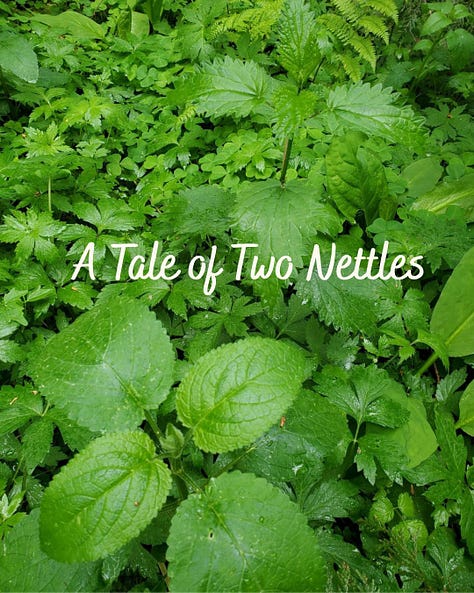
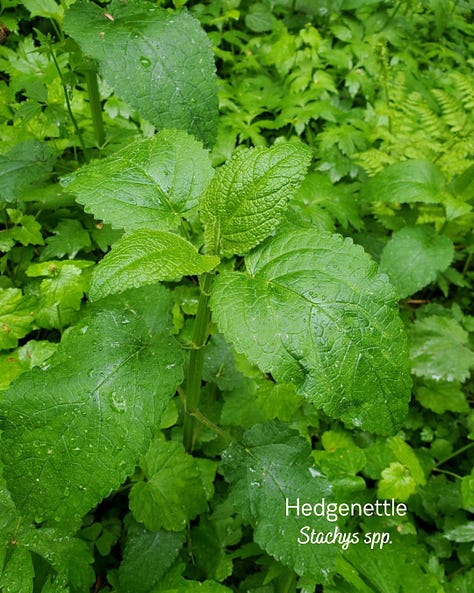
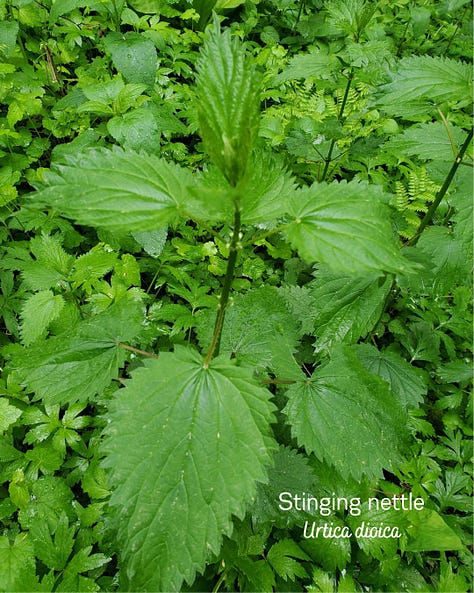
I always look forward to seeing how these two plants change through the season.
If you have moist, shaded areas nearby—along streams, in woodlands, or even at the edges of fields—you might just spot these two nettle friends growing together. Have you met them both?
Nettles Near Blooming - As the season shifts, so does the harvest
On my most recent walk, I noticed that the nettles were just starting to get flower buds forming (you can see them in the photo below right). I look for signs in the plants like this as it helps me know when to shift my focus for foraging + harvesting. In this specific instance, upon spotting these emerging flower buds, I see as a signal that the time to gather nettle tops is nearing the end.
Is it bad to harvest leaves from flowering nettle? No.
Just like your garden herbs that have flowered - they can still have good flavor + medicinal qualities. And I always encourage people to continue using those garden herbs that have bloomed (such as basil or lemon balm) - maybe just use them a bit differently (more on that another time!).
The flavor and medicinal qualities of a flowering/flowered plant will be reduced though, as the plant has shifted its focus and energy from creating + maintaining quality leaves for photosynthesis – to putting energy into creating flowers (and eventually seeds) for reproduction.
I also often find that as blooms start forming, leaves begin to be more susceptible to insect damage. I saw quite a few chew holes in otherwise large, beautiful nettle leaves - which I would not gather or dry for tea. To me this makes sense, as any defensive constituents the plant may create & store in leaves (to make leaves less palatable to insects), are reduced as it puts resources into creating materials needed to generate blooms.
You can certainly still gather a few good leaves here and there from nettle that is near blooming or early in the flowering stage. It will just take a bit more time and focus, than the usual earlier season harvesting of gathering the top few inches of the bright green growth of the nettle plant. 😉
Not to worry though – blooms mean now we have seed harvest to look forward to later, once those flowers bloom & develop!


